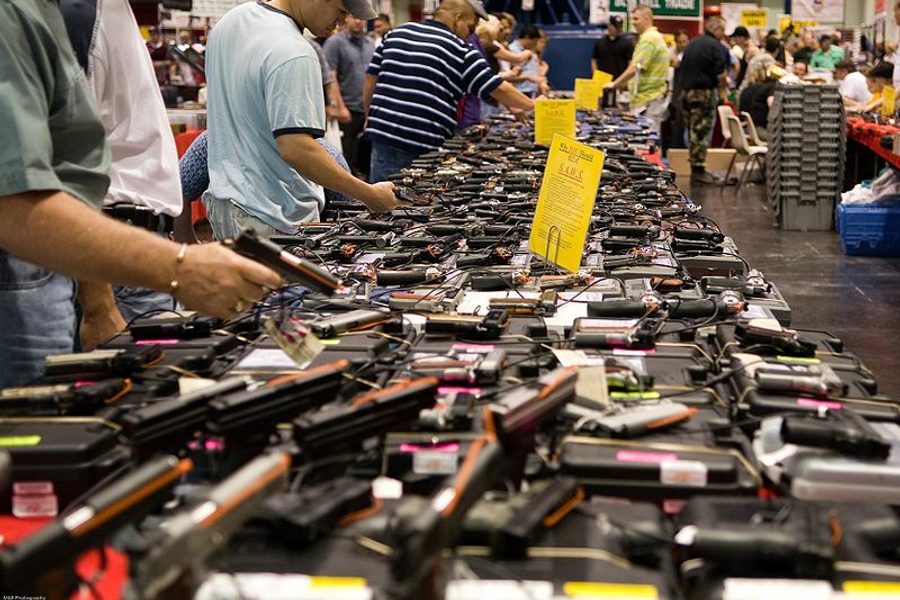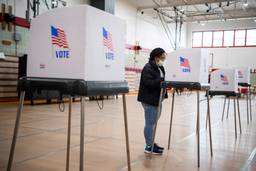Sandy Hook, One Year Later: No Gun Control in Sight
The NRA has taken keen advantage of our political system.
Steven Hill

How quickly a year passes. One year ago, on Friday, December 14, Americans were jolted by yet another episode of gun-crazed carnage, at yet another school, this one in Newtown, Conn. Across the nation, grieving onlookers vowed that this would be the time that the United States passed comprehensive gun control laws. But since then, another 194 children have been killed by guns, according to a study by Mother Jones—ten times more than were killed at Sandy Hook Elementary. In September the Washington Navy Yard massacre resulted in another dozen murders, and just today, as if on cue, another horrific school murder by a shotgun-wielding youngster occurred in Centennial, Colo.
Despite the frightening frequency of such episodes in our gun-weary nation, the outcry has not led to any successful legislative action at the federal level. While President Barack Obama has issued a well-meaning but ineffective call for a “common sense” balance between gun control and gun rights, federal legislation is going nowhere in a highly partisan, paralyzed, do-nothing Congress. In April, a majority of 54 senators voted in favor of a bill to broaden background checks to all online and gun show sales, but in the filibuster-gone-wild Senate, where 60 out of 100 votes are needed to end discussion and allow a vote, that wasn’t enough.
At the state level though, there have been a few signs of legislative spark. In, Colorado, after being traumatized by previous mass shootings, most famously at a school in Columbine and a movie theater in Aurora, Democrats in Colorado passed some of the nation’s toughest gun control legislation this year. Shortly afterward, though, gun rights supporters responded by recalling the two state senators who had championed the bills.
Help keep this reporting possible by making a donation today.
Besides Colorado, other Democratic-controlled states have taken action, including Maryland and Connecticut, which also enacted assault rifle bans. Those three states were joined by New York and Delaware in putting in place background checks for any gun purchase, including those bought on the Internet and at gun shows.
Conventional wisdom has it that in a purple state such as Virginia, support for gun-safety legislation is best played down. Yet in Virginia’s attorney general race, support for gun control may have helped a Democrat win. The Republican candidate, state Sen. Mark Obenshain, opposed comprehensive background checks and closing the gun-show loophole, and had even voted to allow people to carry concealed guns while drinking in bars. Kevin O’Holleran, campaign manager for the winning Democratic candidate, Mark Herring, said, post-victory, “Obenshain’s position against gun-safety legislation was standard GOP fare — but it reflected a state and a voter mindset that no longer exist. Almost all Virginians support sensible gun-safety legislation.”
But the National Rifle Association (NRA) and gun rights supporters haven’t been sitting on their hands. Besides recalling the Colorado senators, they spurred new laws in Kansas and Alaska that void federal gun regulations for firearms manufactured in the state, provided they are kept within state borders. (Attorney General Eric Holder has threatened to sue if these states try to enforce these laws). And some Republican-controlled states have opened the door to letting armed volunteers patrol schools.
While gun control advocates have raised more money than ever, thanks to the support of former New York City Mayor Michael Bloomberg and former Democratic congresswoman Gabby Giffords of Arizona, who was nearly assassinated by a crazed gunman at a shopping mall, the NRA, which spent $18 million in the 2012 elections, still vastly outspends them.
With congressional elections on the docket in 2014, it’s anybody’s guess how this wedge issue will play out in the 35 or so Republican U.S. House districts (out of 435) that will be up for grabs, or in the moderate states where U.S. Senate seats are in play. The math does not encourage optimism, since to earn a House majority, Democrats will need to win more than a dozen districts where Mitt Romney defeated Barack Obama in 2012 (and that assumes that the Democrats sweep all 207 districts carried by Obama). Particularly in those Romney districts, a pro-gun control position doesn’t play well.
Many progressives are frustrated that the country has not been able to move forward on this issue. Following the Newtown carnage, national polls showed a majority of Americans favoring stricter gun control laws, with 90 percent supporting background checks. While those numbers have dropped some over the past year, gun control still has strong support. But as with so many other issues, majority support does not necessarily lead to congressional or presidential action. How can there be such an ongoing disconnect between popular opinion and public policy, particularly at the federal level?
Winner-take-all elections make all us losers
To answer that question, it is important to have an understanding of the clunky architecture of our political system and how we elect our legislatures. Many gun control advocates blame gun control’s failure on the power wielded by the National Rifle Association and its campaign war chest. But the fact is that the NRA’s power doesn’t only lie in the deep pockets of its extremely effective Political Action Committee — it’s also a product of our antiquated winner-take-all elections that give overwhelming power to a tiny minority of people known as “swing voters.”
Just like our recent presidential election was settled in a handful of battleground states, control of the U.S. House of Representatives comes down to only about 35 closely fought districts — fewer than 10 percent of the 435 seats — every two years. That gives overwhelming power to undecided voters who live in these swing districts, many of which are rural and conservative-leaning. So control of the U.S. House comes down to a handful of voters in a handful of districts.
This set-up also gives enormous power to the NRA, because a disproportionate number of NRA members live in these rural swing districts. Many NRA voters are union members and Reagan Democrats, figuring among the 5 percent of voters liable to change sides in a close election based on this single issue. The geographic checkerboard of the political map allows the NRA to divide and conquer the battleground House districts and states.
So the NRA doesn’t have clout because it has lots of money — the NRA has money because it has clout. And that clout comes from controlling votes in key battleground House districts, as well as battleground states voting for senators and president. Says Rob Richie, director of FairVote, “Obama can read the political map as well as anyone, and he knows that, just as in the past after previous brutal tragedies, the politics of gun control rest on complicated terrain.”
The task of the NRA, then — to target its resources to the battleground states and House districts like squares on a checkerboard, and try to alarm just enough swing voters there — is rendered much easier by the geographic-based political map of our winner-take-all system. The reality is that the dynamics of our winner-take-all elections allow gun control opponents to form a potent single-issue voting bloc that far outweighs their minority status. The NRA would not be nearly as effective if it weren’t for our winner-take-all elections, which are fought district by district and state by state.
American media outlets often portray multiparty democracies elected by proportional representation, such as Israel and Italy, as being beholden to tiny political parties of extremists who hold hostage their coalition governments. Yet they fail to recognize how the dynamics of our own winner-take-all elections allow well-organized political minorities and “swing voter” extremists like the NRA and Florida Cubans to push their radical agendas on the mainstream. It’s important to understand how our system works if we ever hope to improve it.
Steven Hill is co-founder of FairVote and the author of seven books, including“10 Steps to Repair American Democracy” and “Fixing Elections: The Failure of America’s Winner Take All Politics”. His opinions are his own.







